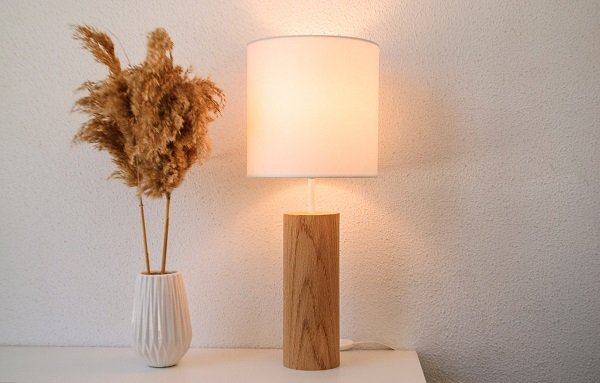The table lamp base, often an overlooked component of lighting design, plays a pivotal role in the functionality, stability, and aesthetic appeal of a table lamp. It is the foundation upon which the lamp’s structure is built, affecting its usability and the overall ambiance it contributes to a space. This article provides a comprehensive analysis of table lamp bases, exploring their design, the materials used, their functionality, and the trends shaping their future.

Design Considerations
The design of a table lamp base is influenced by several factors, each contributing to the lamp’s overall form and function:
Shape and Size: The shape of the base can range from traditional circles and rectangles to more modern abstract forms.. Size is crucial as it must be proportional to the lampshade and the overall design to ensure stability.
Weight Distribution: A well-designed base ensures even weight distribution to prevent tipping. This is particularly important for taller lamps or those with larger shades.
Aesthetic Integration: The base should complement the lampshade and the room’s decor, creating a harmonious look that can either blend in or stand out as a design feature.
Materials Used
Table lamp bases are crafted from a variety of materials, each with its own set of characteristics:
Metal: Metals such as iron, brass, and aluminum are commonly used for their durability and ability to hold weight. Metal bases can be finished with a range of textures and colors, from polished to brushed or even painted.
Wood: Wood bases offer a natural, warm aesthetic. They can be made from solid wood or engineered wood products and are often stained or painted to enhance their appearance.
Ceramic: Ceramic bases are popular for their ability to be molded into various shapes and glazed with a multitude of colors and patterns. They are also known for their heat resistance.
Glass: Glass bases provide a sleek, modern look. They can be transparent, colored, or etched with designs. However, they require careful handling due to their fragility.
Plastic: Plastic bases are lightweight and cost-effective. They can be molded into complex shapes and finished with a variety of colors and textures.
Functionality
The functionality of a table lamp base is determined by its ability to support the lampshade and light source while providing ease of use:
Stability: A stable base is essential to prevent accidents. This is achieved through a combination of the base’s weight, material, and design.
Switch Placement: The placement of the switch on the base affects the ease of use. It should be easily accessible and intuitive to operate.
Cord Management: Some bases include features for cord management, such as built-in channels or clips, to maintain a neat appearance and prevent tangling.
Portability: The design of the base can affect the lamp’s portability. Lightweight materials and designs that are easy to grip can make the lamp more versatile.
Trends in Table Lamp Base Design
The design of table lamp bases is influenced by broader interior design trends:
Minimalism: A trend towards minimalist design has led to simpler, more elegant bases that focus on clean lines and neutral colors.
Sustainability: There is a growing demand for bases made from sustainable materials, such as recycled metals or responsibly sourced wood.
Smart Technology: The integration of smart technology into lamp bases, such as USB charging ports or compatibility with smart home systems, is on the rise.
Personalization: Customizable bases that allow for personal expression, such as interchangeable parts or the ability to add engravings, are becoming more popular.
Challenges and Innovations
Designers of table lamp bases face several challenges and opportunities for innovation:
Balancing Aesthetics and Functionality: Striking a balance between a base that is visually appealing and practical is an ongoing challenge.
Material Innovation: The development of new materials that are both aesthetically pleasing and environmentally friendly is an area of potential growth.
Smart Integration: The integration of smart features into lamp bases requires careful consideration of user experience and technological advancements.
Conclusion
The table lamp base is a critical element of lighting design that often goes unnoticed until it fails to meet the user’s needs. Through thoughtful design, the selection of appropriate materials, and attention to functionality, the base can enhance the overall experience of using a table lamp. As interior design trends evolve, so too will the table lamp base, with a focus on sustainability, smart technology, and personalization. Future innovations in this area will likely continue to push the boundaries of what a table lamp base can be, ensuring it remains an integral part of the home lighting landscape.
